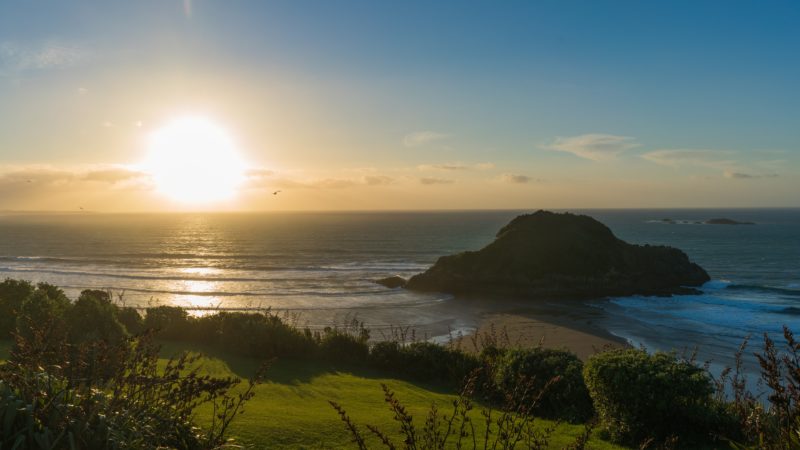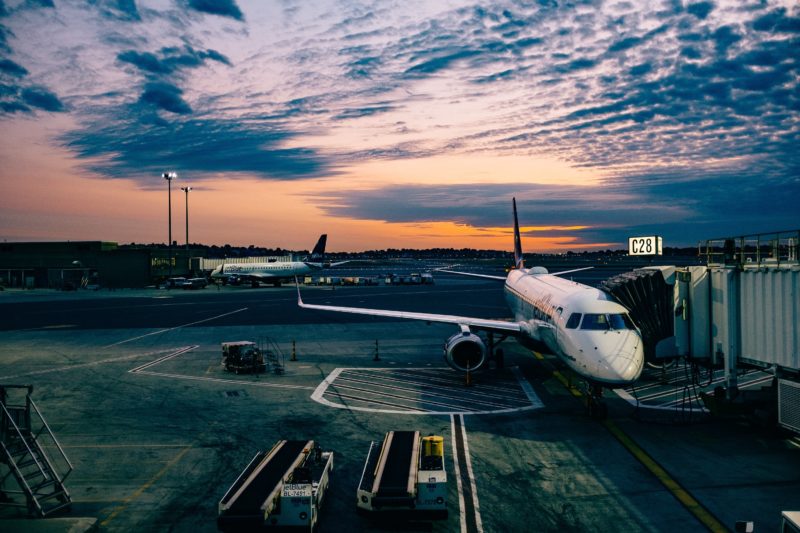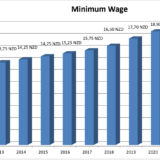Which drone is perfect for the journey and am I allowed to fly in New Zealand at all
Today we want to explain useful things about drones in New Zealand for all interested people. This includes the right choice of drone as well as basic information about the rules and laws for drones in New Zealand. Furthermore, we will talk about organisational things like drone insurances* and things you should know when dealing with the drone batteries. Have fun reading. If you have any questions after reading this article, we look forward to your comments under this article.

Photo by Bobby Stevenson on Unsplash
Are drones allowed in New Zealand
Drones are generally allowed in New Zealand. However, it is important that you as a pilot follow the rules and laws. In New Zealand there are countless areas where you are simply not allowed to fly your drone. Where this is the case we will explain in the further course of this article.
Useful criteria for a drone suitable for travel
For a drone to be considered suitable for travel, it should meet a few important criteria.
After several years on the road, we have quite specific ideas about what is important and what would be negligible.
The most important points for us for a drone suitable for travel:
Weight:
- The lighter a drone is, the more likely you are to take it on a trek or a longer trip. Every saved weight helps you immensely and gives you room for other things you can pack up instead.
Size:
- The smaller your drone is, the easier it fits in your backpack. Even if it is not small, but the arms are foldable, you can save a lot of space.
Camera quality:
- An important criterion besides size and weight of the drone is the video and photo quality. In the end this is the only thing that remains from your flights. We have set ourselves as criteria at least 12-megapixel photo resolution and at least 2.7k video resolution as a goal. 4k video resolution is of course better, but not mandatory for most video projects. The higher the recorded video resolution, the more room you have for post-production and effects in video editing.

Photo by Nathan Anderson on Unsplash
When & where can I fly in New Zealand
Unlike in Germany, there are no places in New Zealand where you can simply fly without preparation. Unfortunately, you are not allowed to fly without a permit from the landowner. This makes the preparation more difficult, but gives you great opportunities if you take the necessary precautions and contact the property owner in advance.
Possible property owners:
- Private person
- Council (respective city administration)
- NZTA (New Zealand Transport Association)
- DOC (nature conservation authority)
You can find more about this topic in these separate articles, also here in our blog:

Photo by Ethan Brooke on Unsplash
What are the rules and laws for drones in New Zealand
- Always comply with all aviation laws of the CAA.
- Fly only with the permission of the respective property owner.
- Always keep the drone in sight with the naked eye. Aids such as binoculars or similar are not permitted to fly the drone within visual range. Neither does the mobile phone picture count as flying in sight.
- The maximum weight of the drone may be 15 kg, with 15 to 25 kg weight special rules must be observed.
- Flight altitude of the drone may not exceed 400 feet or 120 meters. When flying on inclines, note that you are still a maximum of 120 meters above the ground at any point.
- Permissible frequencies for the remote control are 433MHz or 2.4GHz Also allowed are 5.8GHz for video and audio transmission.
- If your drone is able to take photos or video recordings, you are obliged to inform all persons who could be seen on the pictures. This is independent of whether the recording is running at the time or not.
- You are only allowed to fly your drone in uncontrolled airspace in controlled airspace you are only allowed to fly after clearance.
- Manned flying objects always have priority over the drone.
- You may not fly within a 4-kilometre radius of heliports or uncontrolled airfields. The only exception is when the flight is parachuted. Shielded flights are separated from the flight area by a physical barrier (e.g. mountains) and must take place within 100m of this barrier).
All details and rules can be found under the following link.
What do I need to know about drones in New Zealand
New Zealand's drone rules are fundamentally different from those in Germany. In many areas they are much stricter and also the rules can only be followed with preparation. Please inform yourself beforehand and fly only if you are sure that you can follow all rules. If you cannot do so, please refrain from flying with your drone.
In short, New Zealand is anything but drone friendly.
What drone insurance is available and what do I need
Unlike in Germany, there is no general obligation for drone insurance*. Nevertheless, it is recommended in any case, because otherwise you are privately liable in full and unlimited amount. If you want to fly in certain areas such as DOC areas, for example, a drone liability in a certain amount is required. If you cannot prove a liability when applying for a permit, you will certainly not be granted a permit.
How do I transport my drone to New Zealand
Since you are travelling from Europe halfway around the world, so to speak, we assume that you will arrive by plane. Most airlines allow transport in hand luggage as well as in checked luggage. The only airline known to us that allows transport in checked baggage only is Emirates.
The situation is different with the batteries of the drone. These MUST be transported in hand luggage and are not allowed in checked luggage.
Ideally you should transport your drone in a shockproof case or at least an extra cover. Parts that can be damaged during transport are the rotors and the flight arms. If you can, fix the rotors and if available the camera or camera gimbal.
Check the airline regulations before your flight to make sure that you meet all the airline's requirements for taking your drone with you.

Photo by Ashim D’Silva on Unsplash
What do I have to consider when transporting batteries in an airplane
Lithium-ion batteries are not allowed in checked baggage and must be carried in hand luggage. Here, the battery capacity is particularly relevant. Most airlines only allow any number of batteries to be carried up to a maximum capacity of 100mAh. Larger batteries up to a maximum of 160mAh capacity may only be carried in small quantities (usually a maximum of 2) or after special approval by the airline.
In addition, it is advisable to transport all batteries in a fireproof transport bag. These transport bags are available for most drones, for example here*.
How do I correctly bring a drone through customs to New Zealand
For the correct importation of a drone the regulations in New Zealand are fortunately. The only pitfall is the question of goods worth more than 700NZD on the arrival card. Drones and other technical equipment like cameras exceed this value very quickly. At the last entry I answered this question with yes and was then asked about the goods. After it was clear that I was not importing these goods for sale, taking them with me was no problem and I was sent on directly.
So normally you should not have any problems here when entering the country. There are no further conditions such as registration or registration for drones on arrival in New Zealand as far as we know.
Which drones are perfect for travelling
Basically, all drones that have a comfortable size to take along are suitable for travelling. Additionally, it is practical if the weight is as low as possible. It is also practical if the drone is already protected inside and the rotors can be clamped.
Special drone suggestions for your journey we give you in the next section.
The right drone for beginners
For beginners, we have identified the following criteria at the beginning, which make the start much easier.
- The drone should be able to hold its position independently.
- It should allow remote control or control via smartphone.
- The price should be within humane limits (for us up to 400€).
After we defined these three criteria and took a look at the current drone market, there are only two interesting drones left. These two we present to you here briefly.
Ryze Tello:
Originally conceived more as a toy, this mini drone is already technically well positioned to provide all the essential basic functions. Here you already get control via smartphone per app, a range of up to approx. 30 meters and at the same time it is very reasonably priced. Even though the manufacturer is called Ryze, this drone was developed by Intel in cooperation with DJI. Something very good has come out of it and ideal for a start into the first drone experience. There are now several special editions of the drone that come in different designs, but in our opinion, these do not bring any added value in technical form. If you would like to spend more money on a specific colour/film edition, that is up to you.
As a useful upgrade to the drone you can buy a remote control separately, this makes the precise control of the drone even easier. Take a look at the current prices now:
DJI Mavic Mini:
DJI's newer mini drone is perfect for you if you want more than just a small and light drone. With a small size and a super perfect travel weight, this drone is a video and camera quality alternative to Tello. Thanks to the foldable arms and the remote control you can start right here and don't have to buy a remote control first. The comfortable weight of 249g makes it perfect for hiking and other outdoor activities. It also lies better in the wind and masters the conditions outside much better than the ultra-small and light Tello. The camera is also movable downwards and gives you more possibilities for photo and video.
The DJI Mavic Mini is perfect for a higher quality entry and more creative possibilities. Check out the current prices now:
The right drones for advanced users
The drones mentioned above are already quite good for take-off. But of course, there is more to it than that. More video quality, more photo quality and above all higher frame rates for video recording. This allows for example time-lapse and other nice effects in post-processing. Depending on the drone, there is then either more sensor size or a built-in zoom lens. Both are also things that, depending on the application, offer significant advantages over previous drones. We ourselves are currently using the Mavic 2 Zoom and are very satisfied with it. A good alternative with better sensor size and higher quality is the Mavic 2 Pro. Here you do not have the zoom, but get a better sensor. The decision what is more useful to you, unfortunately, you have to make yourself.
Take a look at the current prices now:
- DJI Mavic 2 Zoom*
- DJI Mavic 2 Pro*
- Fly More accessory package*
Where do I buy a drone
If you decide to buy a drone, we have found that at least the above mentioned drones are cheaper in Germany. The price differences are not huge, but at the same time you have a guarantee and warranty when buying in Germany later. With a purchase in New Zealand it becomes more difficult to claim anything from Germany.
We recommend buying from the local dealer in your area. But also understand the convenience of a mail order company like Amazon*.
What do I have to pay attention to with the flight time of my drone
The flight time of a drone depends on various factors. One of them is the way you fly. If you ascend and descend all the time or use the sport mode of your drone at full speed, the battery loses much more power than during slow flight maneuvers. With smoother control, you can fly significantly longer overall.
The weather also has an influence on the flight time. If it is very windy, for example, the drone has to correct more and uses more power than if the drone is hovering in windless conditions.
The temperature also has a big influence. The colder it is, the sooner the battery capacity is reduced. A trick would be to warm up the batteries on your body before the flight, this is definitely helpful at temperatures below 5°C and extends your overall flight time.
Also the drone itself has an influence by the given battery capacity and the possibility to change the battery if necessary. The above mentioned drones all allow a battery change without tools, so you can comfortably take several batteries with you for longer flights.

Photo by Nathan Anderson on Unsplash
Where can I find a drones weather forecast
For the safe ascent of your drone, the weather is the decisive component besides the legal regulations.
This is how we have made satisfactory experiences worldwide with the App UAV Forecast. This app is available in a free version and a paid version. The free version allows you to receive a location-based weather report up to 24 hours in advance. So you can comfortably see wind speeds at different altitudes, as well as the probability of precipitation and other parameters. Enough for us to be able to assess whether the drone's ascent is possible under weather-related aspects.
Useful links and resources for drone pilots
Apps:
- Drone Weather Report: UAV Forecast
- drone flight zones: Airmap
- DJI App for Mavic 2: DJI GO 4
- RYZE Tello App: Tello
Websites:
- UAV & Drone Hub NZ: Airshare
- Aviation Authority NZ:
Different legal situation in Germany
Please note, this article deals exclusively with the rules and laws in New Zealand. The legal situation in Germany is completely different and here you also have to inform yourself in advance. In case of doubt, no flight without knowing and following the rules and laws of the respective country is valid everywhere in the world. Thanks!
Questions, remarks or anything left unclear
Do you have another question, a remark or you are still unclear about something? Then write us a comment under this article and we will answer.
Advertising note
This article contains links marked with *. These links may include affiliate links. If you use one of these links, we will receive a commission or a small reward for your use of the link. These links help us to keep the offer here online for you free of charge. Thanks a lot!
Ask us anything
We run this blog so you can have a great time in New Zealand. All the articles and videos are free for anyone.
If you want to ask an individual question about Newzealand, your working holiday or anything else around travelling New Zealand, then this is your chance.
Even it always looks like holiday, this website and the project is a fulltime business. So you can support us with any question if you'd like.
Simply click the button and ask us, in exchange for your answer you can give what you value our time.
If every visitor would support us with 1€ per year, our business would be up running for long times. Therefore we count on your support!
A big thank you from the depth of our hearts. Julian & the team of Project-Newzealand


